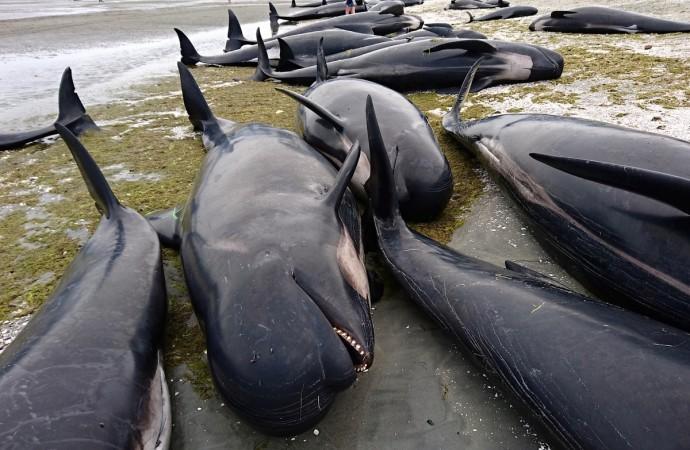
About 300 pilot whales died when they were stranded on a beach in New Zealand on Friday. Desperate efforts are underway to save about 100 whales still alive. It is the third largest mass stranding in New Zealand's history.
Pilot whales: 8 things you need to know about the whales notorious for strandings
Department of Conservation's Regional Manager Andrew Lamason told AFP that at least 416 pilot whales were washed ashore in the Golden Bay region's Farewell Spit located on the northern tip of New Zealand's South Island.
Lamason added that around 70 percent of the pilot whales died before wildlife officers reached the location as over 500 volunteers tried to send the remaining whales back into the sea. However, most of the over 100 whales that were sent back into the sea swam back ashore.
"With that number dead, you have to assume that the rest are in reasonably poor nick as well. So, we're sort of preparing ourselves for a pretty traumatic period ahead," Lamason was quoted as saying by AFP.
The spokesman of the Department of Conservation, Herb Christophers, told the news agency that it was difficult for volunteers to push the living whales back into the water because of the beach being filled with whale carcasses.
"The dead ones that are floating around out there are obstructing their course out to sea. I understand they're concerned about people's welfare. There's quite a safety issue there," Christophers told AFP.
The volunteers have also been told to be careful about thrashing tails and fins of the whales that usually weigh up to two tonnes. They will again try to refloat any surviving pilot whales on Saturday.
Pilot whale, is the most common species in New Zealand, are usually around 20 feet long. They grow up to six metres (20 feet) long.
According to the news agency, whales that repeatedly refloated were euthanized after they became weak during attempts to send them back into the sea.
Christophers said that the carcasses of the pilot whales would sometimes be tied in the shallows to restrict its movement and also allow sea creatures to feed on them. However, this idea might not work in the Golden Bay region due to its popularity among tourists.
Christophers added that the department would "dig a bloody big hole" to bury the carcasses.
According to Lamason, the reason behind the mass stranding of the pilot whales is not known yet. But he thought that the whales beached themselves partly due to the local geography.
"If you designed something to catch whales then Golden Bay is probably the perfect design. Out at Farewell Spit, it's a big massive sweeping hook of sand coming about, the bay is very shallow and once the whales get in there, it's very difficult to work out which way is out," Lamason said.









!['Had denied Housefull franchise as they wanted me to wear a bikini': Tia Bajpai on turning down bold scripts [Exclusive]](https://data1.ibtimes.co.in/en/full/806605/had-denied-housefull-franchise-they-wanted-me-wear-bikini-tia-bajpai-turning-down-bold.png?w=220&h=138)



